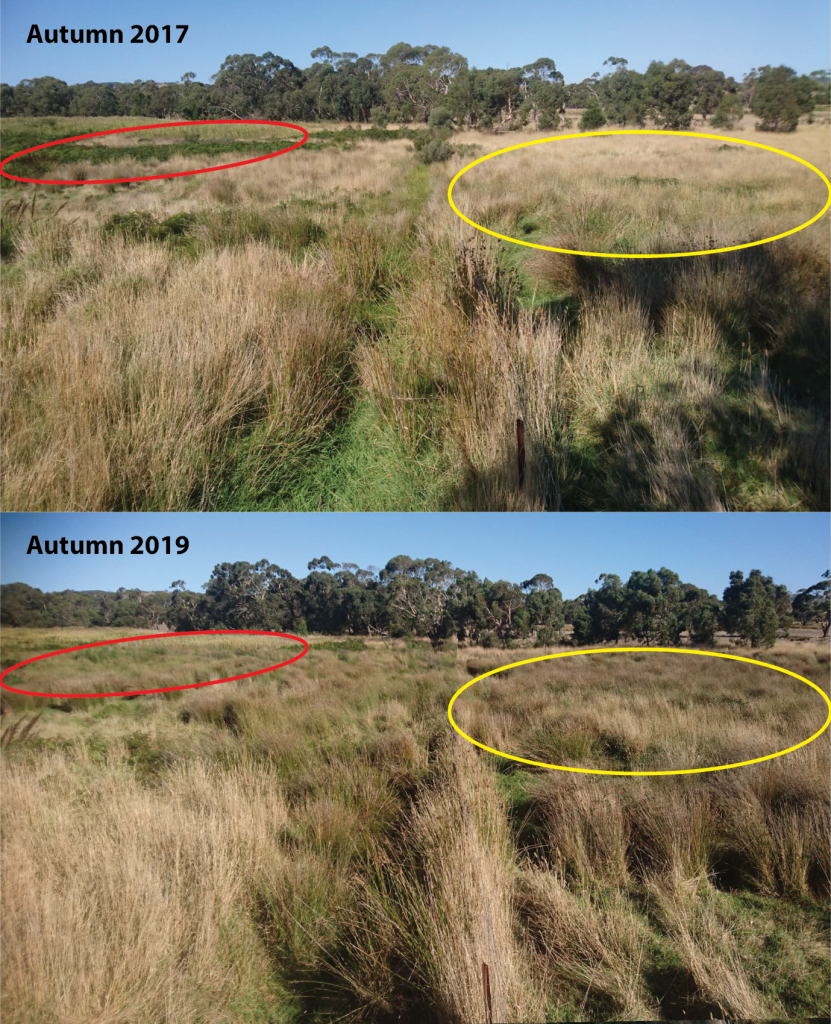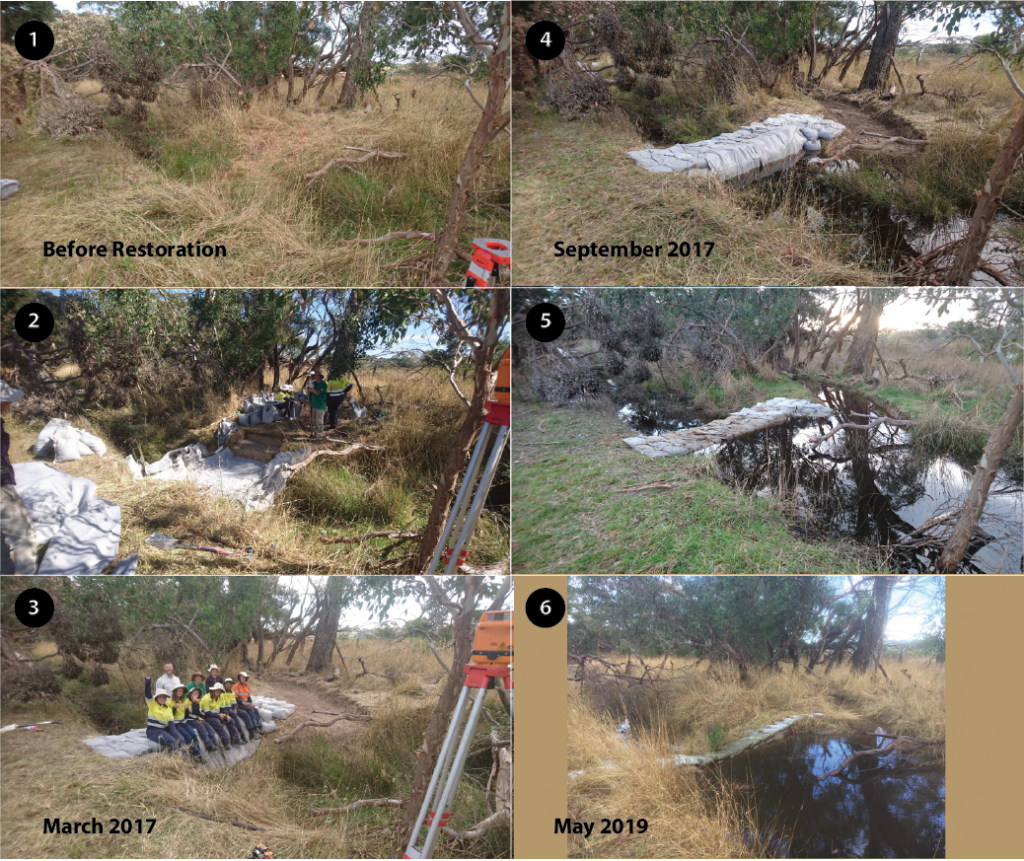Stipiturus Conservation Park two years on – winter rains transform an ecosystem
Native plants are sprouting and weeds are drowning at Glenshera Swamp, Stipiturus Conservation Park! Two years after hydrological restoration work began, the early-season rains are really showing results. Our sandbag structures, built with the help of many hardworking volunteers, are redirecting water into the swamp and rehydrating the soil with amazing results. Time-series images show the subtle but significant transformation taking place.
Park boundary: Increased soil moisture fast-tracks regeneration
On the Park boundary a drain on private land was completely backfilled and sandbag weir built to stop water from escaping down another deep drain. The increased soil moisture has provided perfect conditions for wetland plant regeneration. Seeds from nearby remnant tea-trees have germinated on the bare soil from the works, with a flush of tea-tree seedlings. The higher soil moisture also increases ecosystem productivity. This means more food, particularly for the park’s resident and Nationally Endangered Mt Lofty Ranges Southern Emu-wrens (Stipiturus malachurus intermedius) in summer and autumn, than when the area was previously drier.
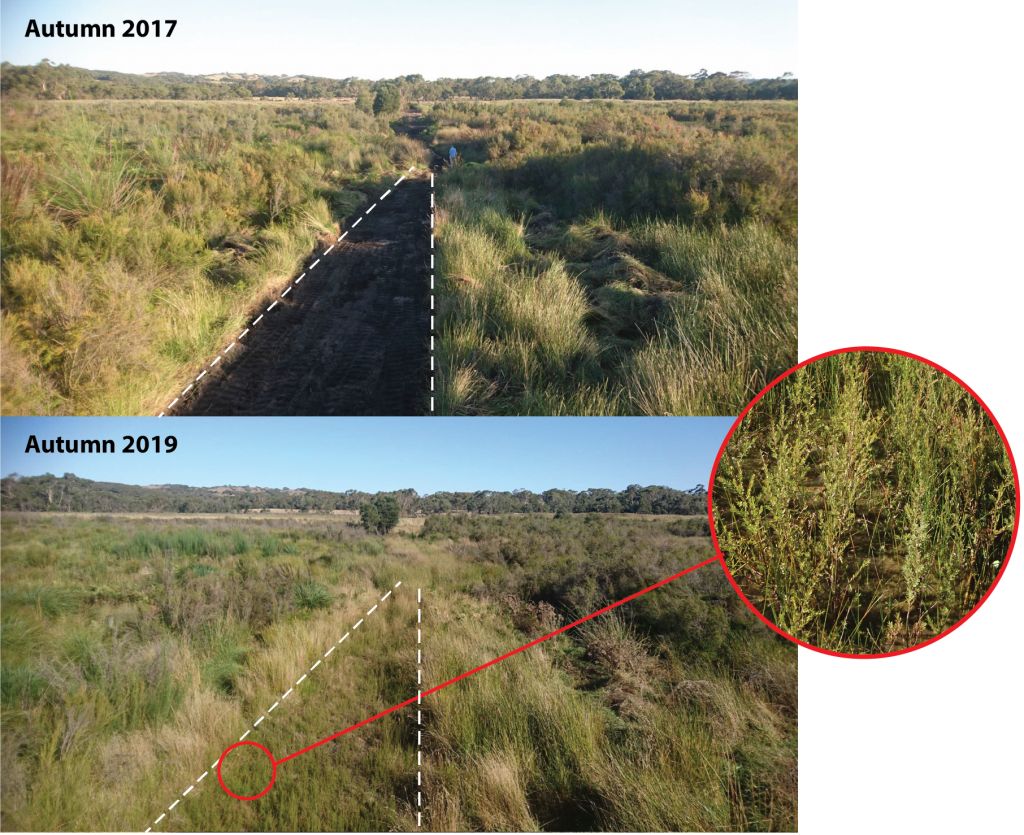
Spillway 2: Paddock returns to wetland
At “Spillway 2” on the adjacent private land, we backfilled an artificial drain and built a sandbag weir to regulate flows and retain water. Since March 2017 the paddock has been gradually returning to wetland. The introduced grasses, mainly Phalaris aquatica (Toowoomba Canary-grass) seen in the first image, have been drowned out and wetland species have been returning. In the April 2019 image, the native wetland rush Juncus sarophorus (Broom Rush) is thriving in the rehydrated peat. Note the absence of natural tea-tree regeneration, due to the lack of remnant tea-trees nearby.
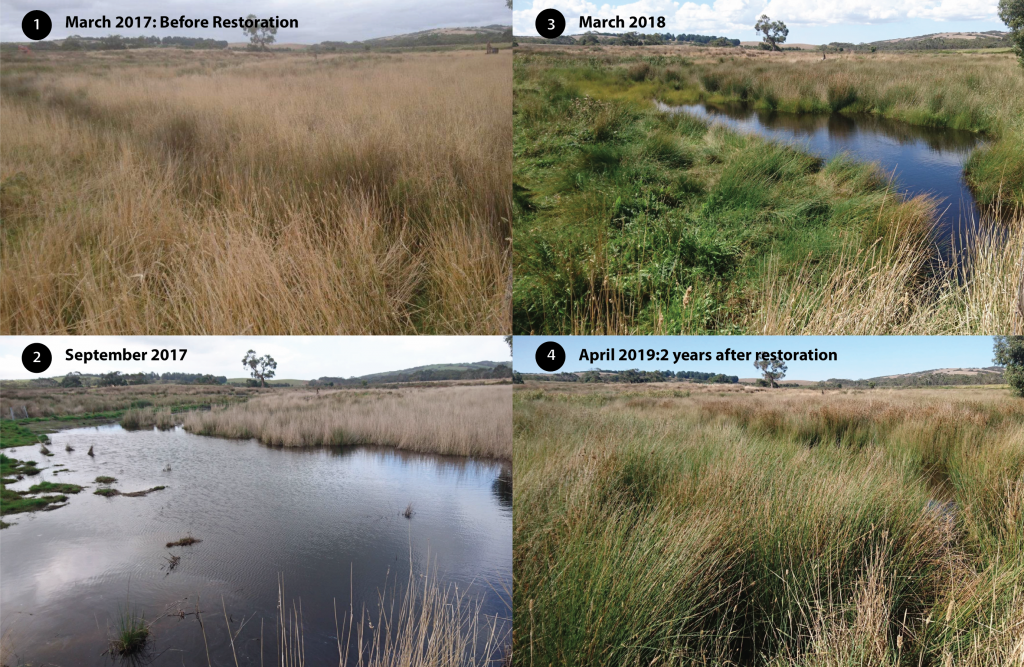
… and from the other side, the backfilled drain and structure are no longer visible under all the wetland vegetation!
Spot the difference: A shift in vegetation composition
“Structure 1” on the boundary of Glenshera swamp, shows the shift from terrestrial to wetland vegetation. The large patch of dark green bracken (red oval) has died off, and pasture grasses (yellow oval) are being replaced by rushes and sedges, which are also dominating other weedy grasses in the understorey.
Weir pools catch early-season flows
The structures NGT built in the Stipi main drain divert flows back along the original creek line and into the swamp. The structures also create weir pools that trap nutrients and debris as the early-season flows arrive, filtering the water before it enters the swamp. The pools also help recharge ground water, because the water sits, rather than run straight down the drain. Good news for the swamp!
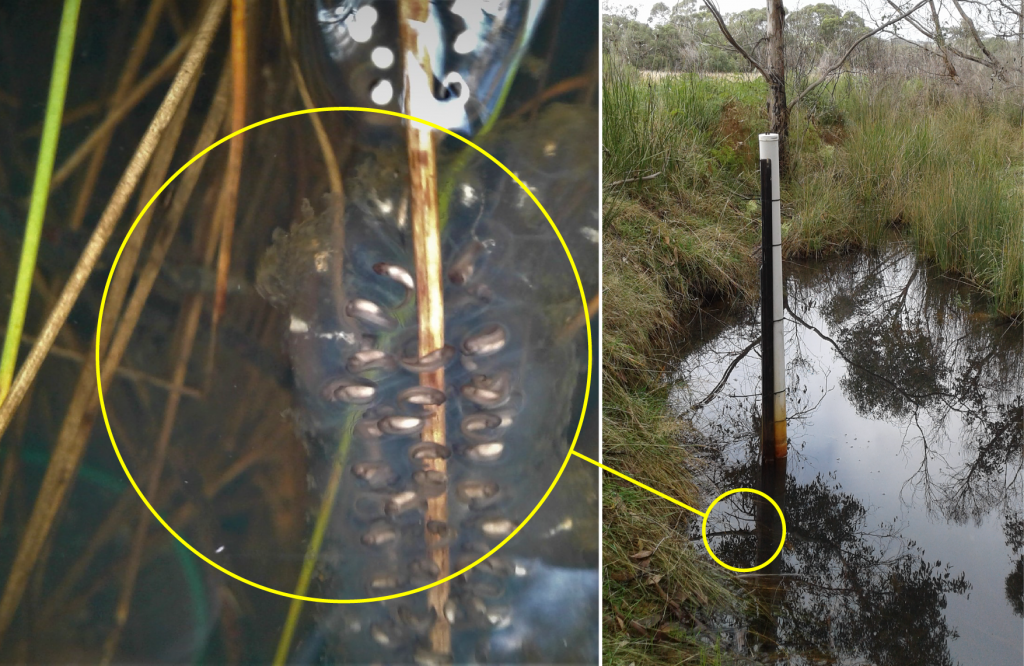
Here’s another look at the time series of Structure 1, from the dry pre-restoration drain, to now. Another example of the important work of many volunteers who help across our projects. Look what we can achieve together! Stay tuned for more updates as we watch the ecosystem continue to shift and recover, with more winter rains to come!


